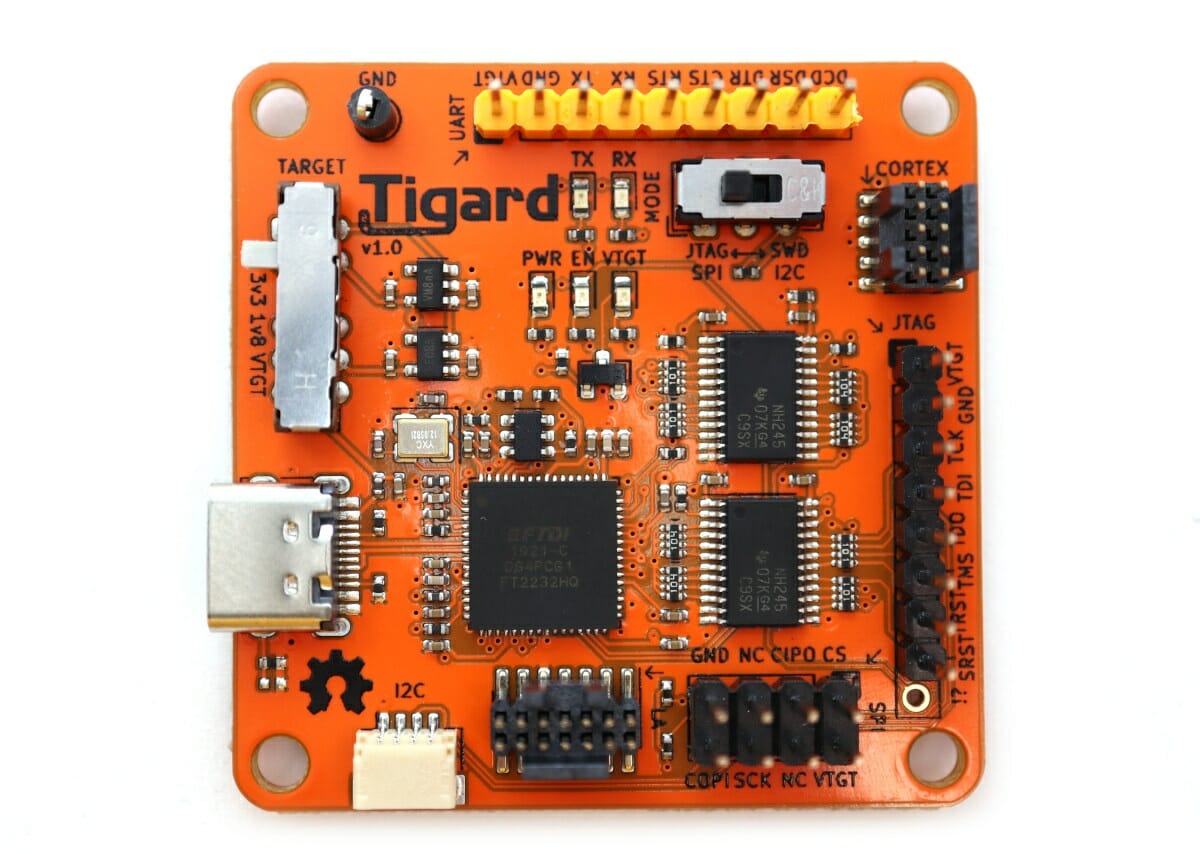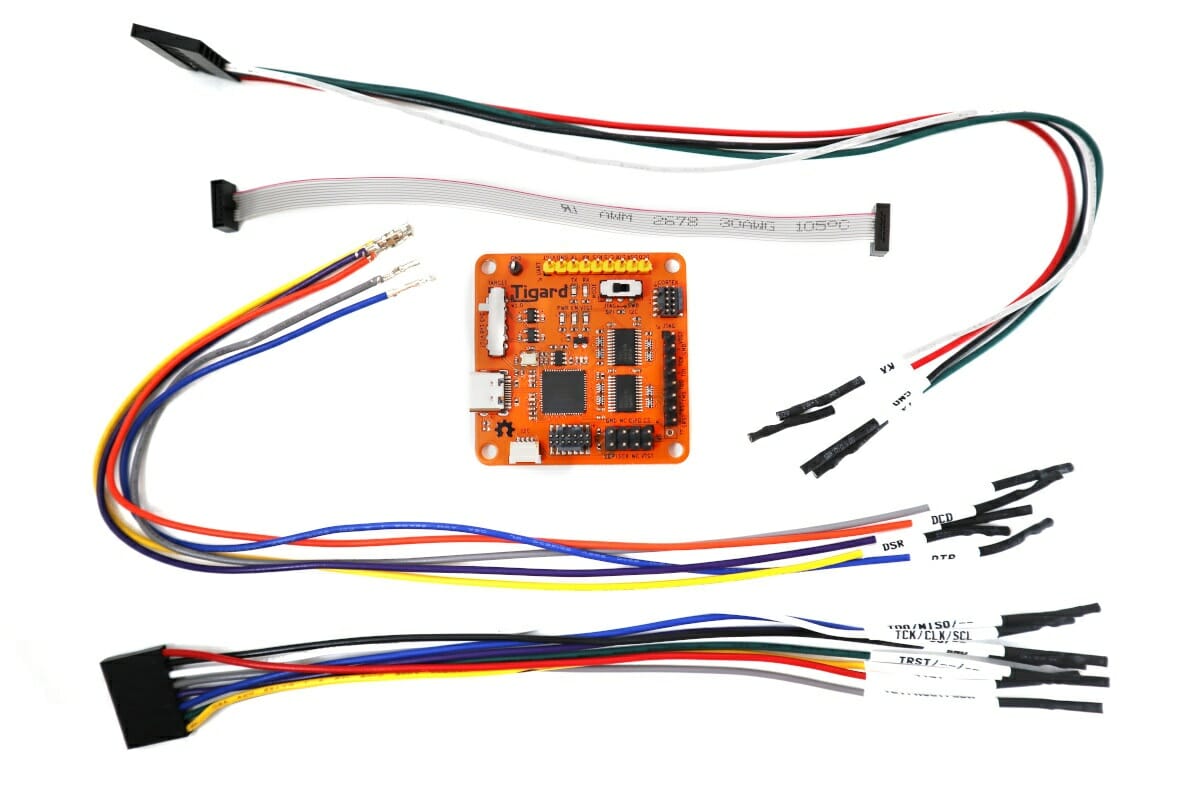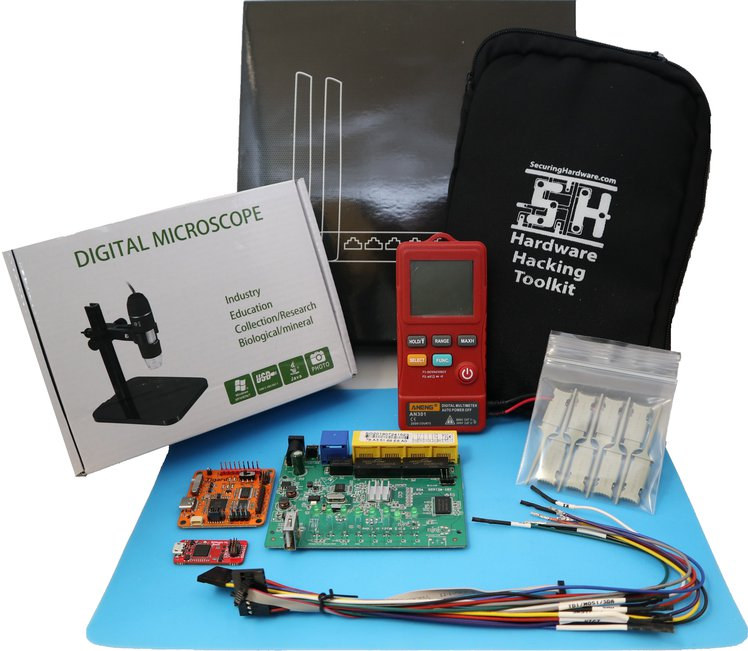There is plenty of cheap 5V or 3.3V USB to TTL debug boards used to access the serial console and/or program boards, but FTDI FT2232H based Tigard open-source hardware board does much more than that as it supports multiple protocols, multiple voltages for hardware hacking & debugging.
The developer explains Tigard can be used as a drop-in replacement for dozens of other hardware tools based on FTDI chips and includes native support OpenOCD, FlashROM, and more.
Tigard board specifications:
- Main chip – FTDI FT2232HQ dual high-speed USB to multi-purpose UART/FIFO IC
- Primary port dedicated to UART including access to all flow control signals
- Secondary port shared among dedicated headers for SWD, JTAG, SPI, and I²C
- USB – USB 2.0 Type-C (480 Mbps) port
- I/Os
- 9-pin UART header
- Qwiic I2C connector
- 8-pin SPI & I2C header
- 8-pin JTAG header
- 10-pin Cortex debug header
- 14-pin logic analyzer (LA) header to observe device-level signals
- Directional level-shifters for 1.8 to 5.5 V operation
- Misc
- Switch to choose between on-board 1.8 V, 3.3 V, 5.0 V, and off-board vTarget supplies
- Switch to choose between SPI/JTAG and I²C/SWD modes
- Indicator lights to aid debugging
There’s no real need for Tigard-specific tools, and the board will work with standard tools and libraries including USB serial drivers, OpenOCD and UrJTAG for JTAG, Flashrom, PyFtdi/PySpiFlash, LibMPSSE, and other tools for the SPI interface, as well as LibMPSSE and PyFtdi/PyI2CFlash for the I2C interfaces.
The board will ship with all necessary cables (SPI, JTAG, Cortex, serial) with each wire clearly marked. There are also two kits with the first one including Bitmagic logic analyzer board for live debugging of serial protocols using Sigrok / PulseView, and the second “Applied Physical Attacks Online Kit” further adding clips and connectors, a simple multimeter, an organizer pouch, a USB microscope, and a target system (unnamed Linux-based Wi-Fi router) as well as online access to over three days of lectures, labs, and support.
You’ll find the KiCAD hardware design files and some documentation on Github. Tigard has already raised over $20,000 on Crowd Supply with rewards starting at $39 for the board and wires, and going up to $1,337 for the complete kit shown above. Shipping is free to the US, and $10 to $20 to the rest of the world. Deliveries are scheduled to start in the second part of February 2021.

Jean-Luc started CNX Software in 2010 as a part-time endeavor, before quitting his job as a software engineering manager, and starting to write daily news, and reviews full time later in 2011.
Support CNX Software! Donate via cryptocurrencies, become a Patron on Patreon, or purchase goods on Amazon or Aliexpress







